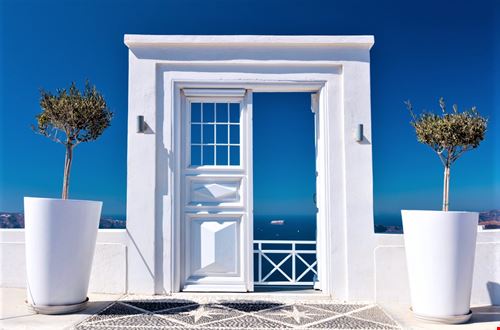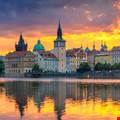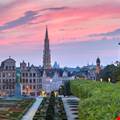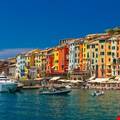Everything you need to know about Fuerteventura
Looking for a B&b or a flat in Fuerteventura but aren’t sure which area to choose? You've come to the right place, we'll give you advice on where to find accommodation. The choice also depends on why you decided to visit Fuerteventura, how long you will stay and what kind of holiday you prefer.
Fuerteventura is said to be one of the most magical Canary Islands and this is probably due to its spectacular sunsets, its light golden beaches and clear sea that enchant the eyes of anyone who visits it and is looking for relaxation and peace. And this is exactly the feeling that Fuerteventura gives you: absolute peace and serenity, as if everything outside this beautiful island did not exist.
The inhabitants of Fuerteventura wear short-sleeved T-shirts and swim almost all year round, and don't even know what winter is, nor days where dusk descends at 4pm. Moreover, its sand dunes as far as the eye can see make you imagine you are walking on centuries of history.
It may be the abundant Vitamin D absorbed from the sun that shines all year, but visitors to Fuerteventura, may arrive pensive and stressed, but when they leave they are lighter in spirit and, sunkissed.
What is the best area to stay in Fuerteventura?
If you are looking for the ideal place to book your accommodation in Fuerteventura, be guided by the peculiarities of each area of the island to find the one that best meets your desires.
To the question: what are the best areas to sleep in Fuerteventura for any kind of traveller? Our advise is:
In the North, Corralejo and El Cotillo are the preferred choices for those seeking the perfect mix of fun, nature and culture. Corralejo, bustling with activity, is ideal for lovers of nightlife and unique beaches such as Pop Corn, so called because of its particular sand that resembles popcorn kernels, due to erosion of coral and pumice stone.
El Cotillo, less crowded but just as charming, offers beautiful beaches and ideal surfing conditions.
If you prefer a more balanced atmosphere, with access to both tourist attractions and quiet moments, the Central area of Caleta de Fuste is perfect. This location suits families and couples, thanks to varied accommodation and proximity to beautiful beaches, ideal for relaxation and water activities.
Love long stretches of fine sand and crystal-clear water? Then the southern zone, with its resorts of Costa Calma and Morro Del Jable, offers a less explored paradise. Costa Calma is the reference point for kitesurfing enthusiasts, thanks to the famous Sotavento beach, while Morro Del Jable will immerse you in a more tranquil environment, where the blue of the sea merges with the horizon in panoramas of unparalleled beauty.
Finally, for those seeking a retreat from the daily hustle and bustle, the area around Gran Tarajal in the central part of the island has a unique serenity, with accommodation offering an escape in the true spirit of Fuerteventura, between sea, sky and land.
By carefully choosing the location for your accommodation, you will be able to experience the island to the full, from fun to adventure to complete relaxation, in a trip that reflects the way you live your holiday.
3 top Fuerteventura accommodations
- H10 Playa Esmeralda - Adults Only - 500 metres from the beach, with swimming pool, 1.4 km from the centre. It is advisable to rent a car or scooter to get around the island.
- Apartamentos Maxorata Beach - 300 metres from the beach, with pool, 200 metres from the centre
- Hotel Riu Palace Jandia - 700 metres from the centre of Morro Jable and a 5-minute walk from Matorral Beach
If you want to find cheaper accommodation in Fuerteventura, visit Spain’s Bluepillow page and select Fuerteventura as your destination.
What are the characteristics of the island and the main resorts?
Fuerteventura is a jewel of the Canary Islands that attracts visitors from all over the world thanks to its varied nature, white sandy beaches and turquoise waters, and its rich history and culture. Each resort on the island boasts unique characteristics, making it a versatile destination for all travellers.
Corralejo, in the north, is the beating heart of Fuerteventura. This lively town is famous for its dynamic promenade, craft markets and a wide range of restaurants and bars. Its beaches, especially the Pop Corn beach with its unique sand like popcorn kernels, offer breathtaking scenery and varied water activities. El Cotillo, also in the north, is a paradise for surfers, with its crystal-clear waters and favourable winds.
Caleta de Fuste, located in the centre of the island, is ideal for families and those seeking a balance between relaxation and fun. Its sheltered beaches are perfect for swimming and snorkelling, while the harbour offers dolphin-watching excursions.
In the south, Costa Calma and Morro Del Jable represent the quieter and more unspoilt side of Fuerteventura. Costa Calma welcomes lovers of water sports, especially kitesurfing, thanks to its long, windy beaches such as Sotavento, which stretch for kilometres. Morro Del Jable, once a fishing village, is now a charming destination that combines idyllic beaches with a touch of Canarian tradition.
Gran Tarajal, another pearl of the island, offers an atmosphere of tranquillity away from the tourist crowds. Here, life flows slowly between strolls along the promenade, fresh fish dishes in local restaurants and the unforgettable sunsets.
In addition to its beaches, Fuerteventura stands out for its inland landscape of arid hills, extinct volcanoes and picturesque villages, offering stargazing, hiking and mountain biking excursions.
Where can I find the best water sports facilities in Fuerteventura?
For water sports enthusiasts, Fuerteventura offers exceptional opportunities to learn and practice, thanks to facilities specialising in activities such as surfing and scuba diving. Two of the most renowned schools on the island are the Point Break Surf School and the PADI Diving Course Centre listed on Yumping.com.
Point Break Surf School, located in one of the most attractive areas of Fuerteventura, is ideal for those who want to try surfing or perfect their technique. The school offers courses for all levels, from beginners to advanced, guaranteeing a complete, safe and fun learning experience. The instructors are experienced professionals who tailor lessons to the needs of each student, ensuring rapid and significant progress. This type of school also offers accommodation, but obviously if you are looking for a holiday dedicated to discovering Fuerteventura and its beauty, this is not the ideal solution. Also, if you are looking for calm and tranquillity, just avoid accommodation filled with teenagers and only enjoy the professional surfing courses on offer.
For underwater world fans, the PADI Diving Course Centre on Yumping.com in Fuerteventura presents a wide range of diving courses, from beginner to advanced, including specialised PADI courses. This centre is perfect for exploring the island's rich marine biodiversity, with the possibility of obtaining internationally recognised certifications. Qualified instructors guide students through safe, educational and adventure-filled immersive experiences.
Both schools represent excellence in water sports on Fuerteventura, allowing you to explore the natural wonders of the island, both on the surface and in the depths of its crystal-clear sea.
Fuerteventura’s 3 Top Beaches
Fuerteventura, one of the islands of the Canary Islands archipelago, is famous for its extensive beaches and breathtaking landscapes. Among many, three beaches stand out for their uniqueness: Playa de Sotavento, Cofete and El Cotillo.
If you're wondering where to find the best beaches in Fuerteventura? There are several locations to consider: Caleta de Fuste, with its calm waters ideal for families; Costa Calma, a paradise for water sports enthusiasts; Morro del Jable, which offers a mix of natural beauty and tourist services; and Los Molinos, a hidden gem for those seeking a more authentic experience.
Playa de Sotavento is famous not only for its natural beauty but also for being a paradise for kitesurfers. Located on the south-east coast of Fuerteventura, this beach stretches for kilometres with fine white sand and turquoise waters. Especially unique of Sotavento is a lagoon that forms at low tide, creating ideal conditions for kitesurfing.
Despite its beauty, it is important to know that the strong wind makes this beach less suitable for lounging on the beach.
Cofete is located in the wildest part of Fuerteventura, on the Jandía peninsula. This extensive and remote beach is nestled between imposing mountains and the Atlantic Ocean, offering an almost surreal setting. Its limited accessibility and unspoilt nature make it a perfect place for those seeking tranquility and unspoilt landscapes. Cofete is a testimony to the strength and beauty of nature, far away from civilisation and tourist services.
El Cotillo, located on the northwest coast of the island, is known for its calm waters and natural lagoons, making it ideal for families and those seeking a quieter beach experience. Although the sea is generally calmer than in other parts of the island, El Cotillo also has suitable beaches for surfing and bodyboarding, offering the best of both worlds.
In general, Fuerteventura's beaches are mostly natural and free, with no bathing establishments or services.
So it's essential to arrive prepared with water, food, a hat for the sun and a sweatshirt, as the wind is cool, even in the middle of summer. Also, remember that since the sea in Fuerteventura is part of the Atlantic Ocean, very strong currents are common, making swimming offshore dangerous.
Visiting these beaches offers a unique nature experience, in one of the most beautiful settings of the Atlantic Ocean, but requires a conscious and respectful approach to the environment and its conditions.
Where to eat in Fuerteventura
You’d imagine that in a place like Fuerteventura you would always eat good fish, but this is not the case. We advize to go far away from the tourist area of Fuerteventura, and if you are in Corralejo, to go further inland.
If, on the other hand, you move away from Corralejo, it is always advisable either to ask the locals for advice on where to eat good fish or even meat, or to rely on The Fork.
In general, we can tell you this:
- Cofradías de Pescadores in Corralejo: these restaurants are run by the Fishermen's Cooperative and can be found in various locations, including Corralejo. They vary from more spartan options to those that are a little more upmarket. They are famous for offering fresh fish and local dishes, giving you an authentic culinary experience linked to the island's fishing tradition.
- Inland restaurants in Corralejo: Exploring the inner streets of the village of Corralejo, where the locals live, you can discover less touristy restaurants offering a more authentic experience and local dishes. These restaurants are ideal for those seeking a genuine culinary experience away from the more common tourist circuits.
- Chiringuito in El Cotillo (Los Lagos): Situated near the white sandy coves and crystal-clear water of Los Lagos, near the El Cotillo lighthouse, this chiringuito has excellent fish and quality paella, at affordable prices. Although you may have to wait a while, the setting and the quality of the food promise to make the wait pleasant.
Advice on specific places in Fuerteventura is tricky on an ever-changing island as places may be added or closed, so it is best to explore, bearing in mind what we have recommended.
A little history of Fuerteventura
The history of Fuerteventura begins around 3000 BC with the arrival of the Guanches, North African Bedouin tribes. The name 'Maho', were the original inhabitants, deriving from their goatskin shoes.
These ancient inhabitants were farmers who lived in cave structures, where cave paintings and archaeological remains have been found. The history of the island up to 1200 remains unclear. In the 14th century, the island attracted gold prospectors and slave hunters, and was first mapped in 1339. In 1404, the nobleman Jean de Béthencourt conquered the island, giving rise to the name of the first capital, Betancuria.
Fuerteventura was divided into two kingdoms, Jandia and Maxorata, unified by the Spanish conquest in 1412. Later, in 1424, the Bishopric of Fuerteventura was established, abolished after only 7 years. In 1476, the island came under the control of the Catholic Monarchs, marking the beginning of the decline of the Guanche population. In the 17th and 18th centuries, pirate raids led to the construction of fortifications.
In the 18th century, the influence of the Sánchez-Dumpiérrez family and the construction of the Casa de Coroneles mark an important historical phase. In 1812, the island became part of the Spanish Province of the Canary Islands, and in 1860, the capital moved to Puerto del Rosario. The reforms of the 19th century and the declaration of a free trade zone stimulated the island's economy.
The 1960s brought important changes with the opening of the Matorral airport, which prompted many inhabitants to emigrate and launched the tourism industry. Tourism became the main activity, leading to significant infrastructure developments, but without compromising the preservation of natural areas and local traditions.
Frequently asked questions about holidays in Fuerteventura
What is the least windy part of Fuerteventura?
The least windy part of Fuerteventura is generally the south, particularly the areas near Costa Calma
What are the main tourist areas in Fuerteventura?
The main tourist areas of Fuerteventura include Corralejo, Caleta de Fuste, Costa Calma and Morro Jable.
Where can I find a quiet and relaxing place in Fuerteventura?
For a quiet and relaxing place, Cofete offers a serene atmosphere and unspoilt natural landscapes.
Where can I find a livelier area in Fuerteventura?
A livelier area can be found in Corralejo, with its lively nightlife, restaurants, and water activities.
Where can I find the most characteristic villages in Fuerteventura?
The most characteristic villages in Fuerteventura include Betancuria, Pájara and La Oliva, known for their traditional architecture and local history.
Hotel Rural Era de la Corte - Adults only
Lajares
Viaggio
Vita notturna
Ecoturismo
Autentico
Atmosfera
5/04/2024

Find your accommodation
Search for your favorite destination, customize your search and find the right place for you for your next trip.








